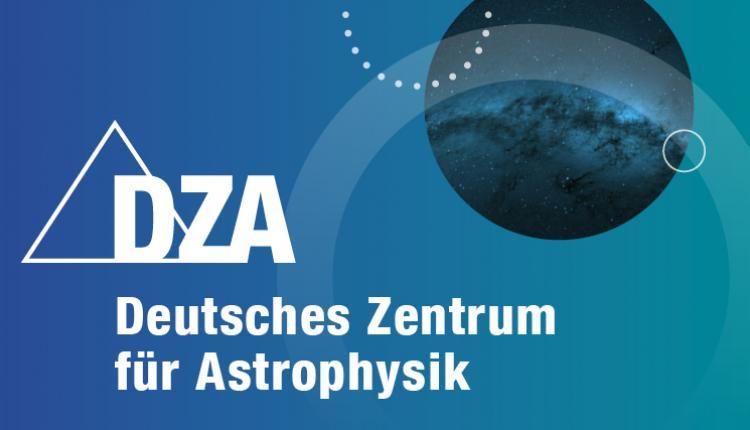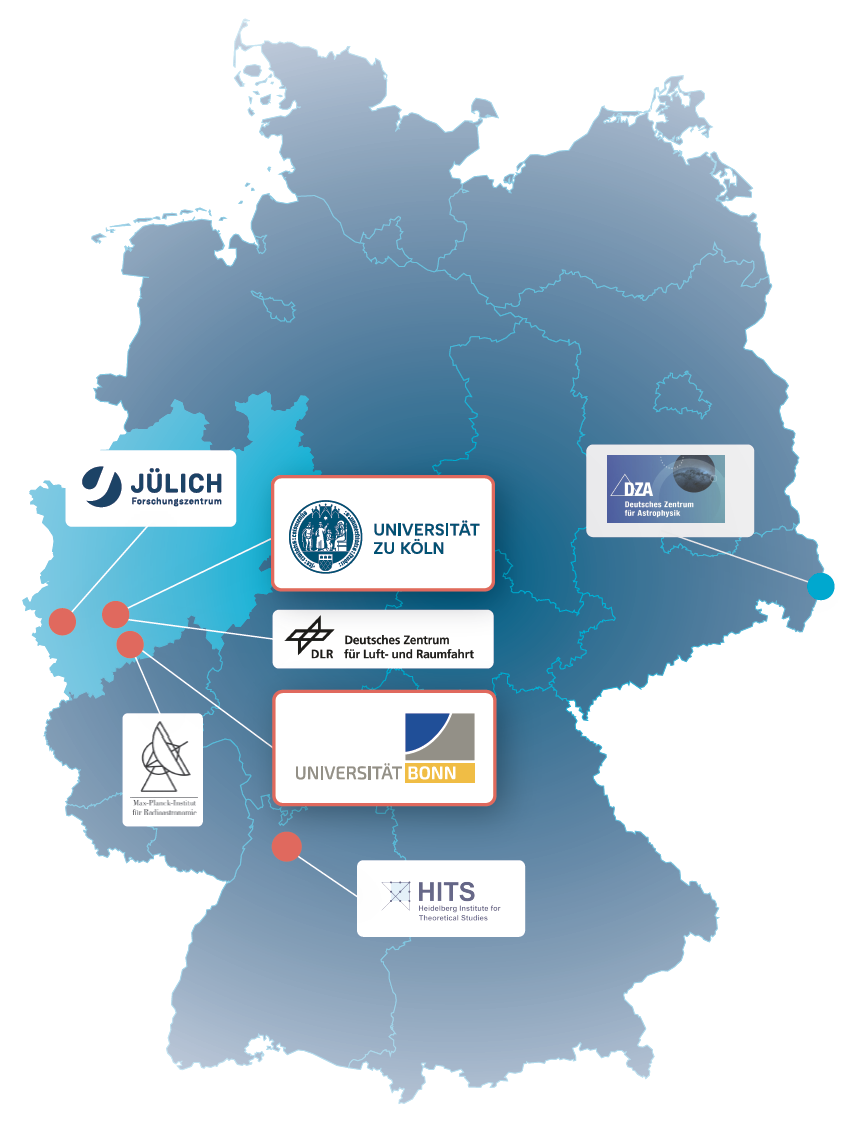The German Center for Astrophysics (DZA) is a joint initiative of the Council of German Observatories (RDS) and the Committee for Astroparticle Physics (KAT). Together with the TU Dresden and the Association for Data-Intensive Radio Astronomy (VdR), they successfully participated in the “Knowledge Creates Perspectives for the Region” competition in April 2022. On September 29, 2022, the Federal Minister of Education and Research, B. Stark-Watzinger, together with the Minister President of Saxony, M. Kretschmer, and the Minister President of Saxony-Anhalt, Dr. Haseloff, announced at a federal press conference that the DZA had been selected for Lusatia. The new national centre will be headed by Prof. Dr. Hasinger and will be established at two locations: in Görlitz and in the district of Bautzen. PI Kramer is one of the PIs of the DZA proposal. The DZA will be supported with 1.7 B Euro over the next ten years. The set-up phase will run until 2026, meaning that the DZA and Dynaverse will be established at the same time. The centre itself will employ an estimated 1,000 people. These will be active in cutting-edge astronomical research, which extends across the entire electromagnetic spectrum into the gravitational wave window. Astronomical data streams from all over the world will be bundled and processed at the DZA. This will also include data from the future large telescopes, such as the SKAO. The DZA will build a technology centre and a Low Seismic Lab where, among other things, new semiconductor sensors, silicon optics, and control techniques for observatories will be developed. As the DZA will join Dynaverse as a national cooperation partner, we are planning frequent secondments, collaborative workshops, and longer-term visits.

The Square Kilometre Array Observatory (SKAO) is an ambitious international project to build and operate the world’s largest radio telescope. By observing in the low- and medium-frequency part of the radio electromagnetic spectrum (50 MHz-–15.4 GHz), SKAO will allow us to cover a wealth of open questions in physics and cosmology. After a design activity guided by the participation of experts, including the Centre National de la Recherche Scientifique (CNRS) and the Max-Planck Society, the SKAO has now reached a maturity level that has led to the launch of the SKA Organisation as a new inter-governmental organisation and to the start of construction (2021–2029). With its Terabits/s of data produced, pre-treated, and – in large part – discarded at the telescope site, and its 700 PBytes of data to be archived every year, the SKAO is considered to be one of the largest Big Science / Big Data projects. Both France and Germany are now full members of the SKA Organisation. The two countries work closely together, in particular to establish a European SKAO Regional Science Centre. The scientific representatives of France and Germany are C. Ferrari (SKAF) and PI Kramer (MPG /MPIfR). While Prof. Kramer is a PI of Dynaverse, Prof. Ferrari and Prof. Gratadour (SKAF) are important international collaborators. Through this joint expertise, Dynaverse has a strong foothold in the German, French, and, therefore, European SKAO activities.

The Centre de Données astronomiques de Strasbourg is the world-leading institution for the collection and distribution of astronomical data in catalogues and beyond. As a data centre, it provides services to the entire astronomy community, including SIMBAD for the identification of astronomical objects, VizieR as a central catalogue service that collects tabular data from publications, and X-match to link and join information from different sources. Beyond these services, CDS is heavily involved in the standardisation efforts of the International Virtual Observatory Alliance (IVOA). Additionally, it develops tools and applications for astronomers, including the Aladin interactive sky atlas software tool for access, visualisation, and analysis of images and other types of astronomical data. The vast experience of CDS is of great value for our SUE and a strong support for our challenging developments.

Deutsches Museum Bonn (DMB) is the professional partner of Dynaverse for public outreach. The museum has a long tradition and superb expertise in communicating natural science to the public. It is very popular and attracts large numbers of school classes, families and other visitors. DMB recently reworked its concept and major content, with AI now playing a key role, e.g. the successful KI Mission exhibition co-organised with UB and the Lamarr Institute. Part of the exhibition explains AI principles and applications interactively based on a gamification concept and guides who provide knowledge-adapted tours through the museum. It is apparent that explaining AI concepts to everybody is of great importance, and DMB’s popularity has been strongly boosted by this concept. The astrophysics of Dynaverse is also facing the challenge that state-of-the-art science must go hand in hand with AI. DMB is therefore an ideal partner, as the museum’s self-conception aligns perfectly with our needs. Dynaverse provides popular astro-physical content with its various technical challenges, while DMB offers ideas to exhibit the scientific process, its results, and the need for modern analysis methods.

![]()

